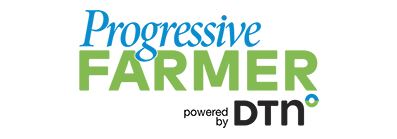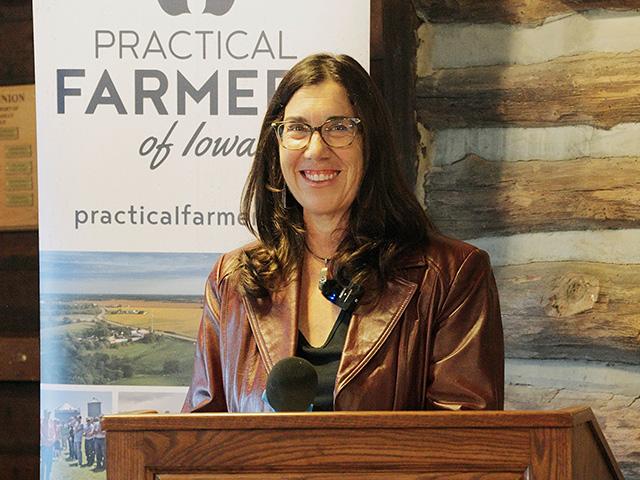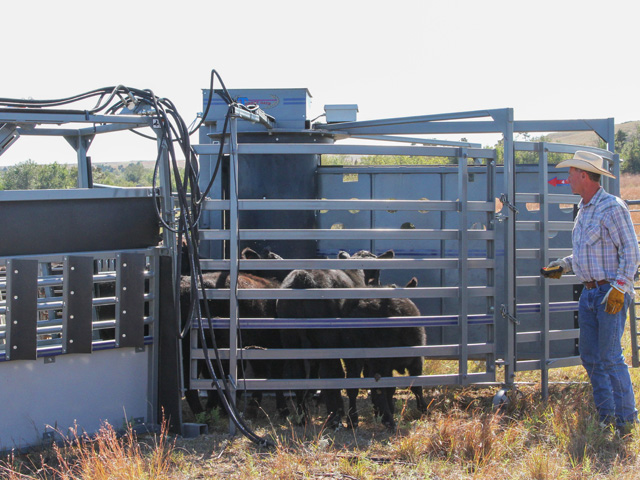Cattle Handling Systems
Chutes and Gates Get Safer With Remote Operators
Anyone who's ever worked cattle knows the safest place is outside the gate. It only takes a second for a misstep to turn into a serious injury.
In most cases, injuries from cattle are the result of being crushed against a gate or some other stationary object. The Centers for Disease Control and Prevention (CDC) tracked fatalities caused by cattle in four states between 2003 and 2008. Over that time, the data revealed 21 total deaths in those states due to cattle, including eight in Iowa, two in Kansas, seven in Missouri and four in Nebraska. Decedents' ages ranged from 8 to 86. The most common activities at the time of death were working with and treating cattle in enclosed spaces (including pens and chutes), and moving or sorting cattle toward pens, barns or pastures.
The study notes that, of the 21 deaths, 13 were men more than 60 years of age. A case study in Iowa reported age-related hearing loss and doctor-diagnosed arthritis or rheumatism were often associated with injuries caused by livestock. One-third of livestock-related deaths occurred when the decedent was working alone.
LARGE-ANIMAL WORK
Even cattle accustomed to being handled can be unpredictable if they are panicked. Kansas veterinarian Scott Randolf, of Lyons Veterinary Clinic, says they incorporated remote handling systems into their facilities about five years ago to help keep everyone safe when working large animals.
Randolf added a Moly Manufacturing hydraulic Silencer chute with a remote TurretGate & Alleyway out of concern for the safety of associate veterinarians and technicians, some of whom were pregnant at the time. This system uses a patented gate design that shuttles back behind waiting animals and eliminates the need to swing the gate back open into waiting animals, virtually eliminating the need for people to be in contact with cattle.
"A lot of my associate veterinarians are young women, and I really wanted to do all I could to add to the safety aspect of our operation," he explained. "Having a remote TurretGate, Alleyway and Silencer hydraulic cattle chute limits contact with cattle as they are being worked. That makes it safer for us, and it absolutely adds to the animal welfare aspect of handling cattle because there is less pushing them forward and they don't all bunch up trying to crowd their heads together."
Randolf said the system they have is designed to help sort three to five cattle at a time, bringing them through the alley into the chute. While he says it's primarily used for cattle, he has used the system to help treat a camel once.
A remote handling system does cost more, but the veterinarian says he believes it's paid for itself by helping to keep everyone healthy and safe by not having to get into the pens.
FOR THE LOVE OF CATTLE
Lacey Mollhagen grew up in her family's sixth-generation row-crop and cow-calf business at Lorraine, Kansas. She is a key part of the custom cattle-handling equipment business her dad, Jon Mollhagen, started, known by most in the cattle industry as Moly Manufacturing.
P[L1] D[0x0] M[300x250] OOP[F] ADUNIT[] T[]
Lacey says their on-farm handling facilities are all custom built, and they use the same products they research and develop for others. She says one of the reasons more people are turning to remote handling facilities is the increasing challenge of finding experienced hired help.
"It's hard to find experienced help today, and if we do, they often move on as life changes. COVID-19 has taken that to another level. But that is just the industry today. It's expensive to hire people, and you have to add in the safety factor. You can't afford for anyone to get hurt. It means medical bills, workers compensation and downtime. We have had to adapt to find a way to make this work. We have to be successful, and today a key part of that is efficiency and safety in how we handle cattle."
Remote handling systems can go a long way toward offsetting today's challenges. Lacey laughs, saying there is a YouTube video of her 94-year-old grandma loading the tub while the family works cattle.
"Believe me, all of my grandparents get out there, press the buttons and keep a nice flow of cattle coming for us. It's not all that unusual, though, because we all know the cattle business is a family business. It takes three generations to get the job done sometimes. A growing part of our sales are coming from those in that retirement age range who want to stay in the cattle business. They will invest in the equipment to help them continue to be able to do what they love in a safe and efficient way."
Lacey says many users of their remote systems are working a herd on their own, and even though that herd may be small by industry standards, it's something that person really enjoys.
"We talk with people all the time with 20 head of cows. They love it, but they are working animals by themselves. They want a set of remote-control handling equipment for just those 20 cows. They know it makes handling those animals safer, and they can work them whenever they want. They turn on a switch and they're ready to go. We've sent systems all over the world, from Russia to Australia, and many ranches in Hawaii. This is a solution for people. Anyone can use remote handling. If you can turn on a TV you do this."
THE ANIMAL WELFARE SIDE
There's another aspect of remote handling that is especially important as the industry emphasizes beef quality assurance (BQA) practices. Remote handling is proven to be low-stress handling.
Lacey says they are always inspired by Colorado State University's Temple Grandin, a world-renowned scientist in animal behavior and handling system design. Her work helps them see their handling facilities as cattle would see them.
"Having her dig into this topic is just amazing. It's so important to remember we are predators to these animals, and that will never change. When you can keep your distance and not pressure or push cattle into high impact areas it's better. They see a moving wall with a remote Turretgate, which is much lower stress than having a predator behind them pressuring them. It's amazing to watch, because it's such a significant difference in how they respond."
William Hollenbeck has seen the difference firsthand. A research assistant and stocker unit manager at Kansas State University in Manhattan, he says not only do cattle respond to remote handling differently, the systems make the job much safer for people.
"What I've seen is that a highly excitable animal, really all cattle, are less apt to panic in this type of system. It's important to draw the distinction that you can excite an animal, but not panic it. Once that line is crossed into a panicked state, it doesn't matter if that animal's nature is docile or excitable, bad things can happen."
Hollenbeck says he knows a lot of ranchers who like and use the box handling system today, but he believes, based on his experiences, that the remote system is safer for many users, especially where labor is limited, due to its design. The box systems tend to rely on trained stockmen and cattle's natural instincts to work cattle.
The premise of a box system, explains Hollenbeck, is that an animal gets to the end of it, is boxed in, and at that point has to turn around and come back.
"I understand that psychology and that it works because, once you box in an animal, they will turn and come back the way they came in. We use the psychology of the animal. It sees being boxed as being trapped and it reacts a certain way," he explains. But as Hollenbeck notes, the remote TurretGate and Silencer hydraulic chute system is more about the animal always moving away from pressure. This also uses animal psychology, and where labor is limited or unskilled it may prove to be the better approach.
"Here the animal is always allowed to move forward," he says. "You never train the animal to turn around and come back at you. I know guys love the box, but if you put highly excitable cattle in that box, they panic, and that's where I diverge from that system. I always want the cattle I am working to have a feeling they can escape. I want them to feel there is a way out because that's safer for me."
Hollenbeck says he knows what it's like to find yourself in an alleyway, too close to a gate, behind a boxed-in animal that wants out. That's where accidents occur.
"Where there is a human-animal interaction, there's potential for a trip to a dentist, a facial repair specialists, or worse," he says.
INEXPERIENCED HANDLERS
The remote handling system has been at the beef unit where Hollenbeck has worked for more than 10 years. It's seen more than 30 undergraduate employees, most without handling experience, learn how to operate it. No one has been injured.
"One of the advantages of this is you can have inexperienced handlers come in and help, and with just a little coaching you know they won't get hurt. We don't have the help on ranches anymore like we used to, and these systems are designed around that idea. We've come to this point in our industry where you can see we've done a terrible job of transitioning ranches over to the next generation. Our kids are gone, and if you have one person helping you and they get hurt, there's no one behind them to step up. When I was growing up, if I got hurt, it was next one up. There were five of us. That's not what we see anymore."
As for price concerns, Hollenbeck says if a remote system is replacing a hired hand, and removing liability and health insurance for that individual, it is an investment many can pencil out.
"It's a matter of not only protecting, but of managing our assets correctly. We can't live in this third-world wooden chute and corral system anymore, because we don't have the labor to make that work efficiently and safely."
(c) Copyright 2021 DTN, LLC. All rights reserved.






